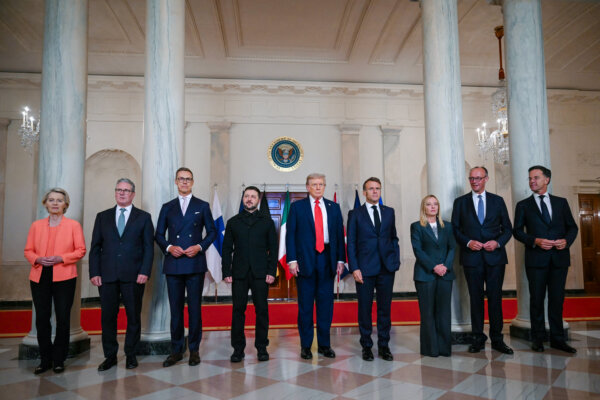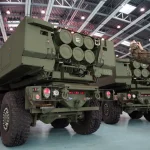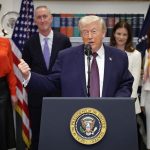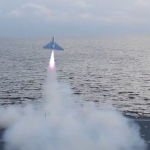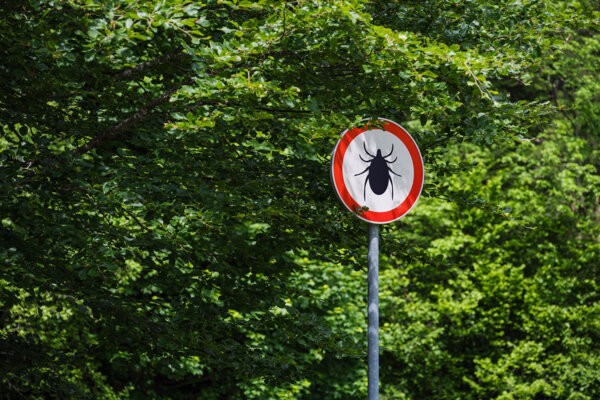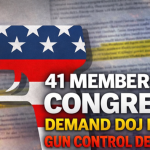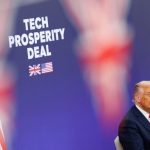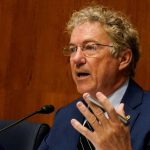Days after his meeting with Russian President Vladimir Putin, President Donald Trump hosted Ukrainian President Volodymyr Zelenskyy and European leaders at the White House.
The Aug. 18 meetings underscored the significance of recent diplomatic efforts by the United States to resolve the Russia–Ukraine war. The latest round has set the stage for a possible trilateral summit between Trump, Putin, and Zelenskyy.
European leaders and Zelenskyy struck an optimistic tone, particularly after Trump said the United States would help Ukraine with security in a peace deal.
Months after a previous cease-fire effort failed to attract Russia to the table, Trump acknowledged the challenges in seeking to end a war that has caused hundreds of thousands, if not more than a million, deaths.

“I thought this was going to be one of the easier ones. It’s actually one of the most difficult,” he said during a press conference ahead of his multilateral meeting with European leaders.
“We have to give it our best,” he said.
1. Breakthrough on Security Guarantees
Mark Rutte, the secretary-general of the North Atlantic Treaty Organization (NATO), said Trump “broke the deadlock” with Putin through a diplomatic dialogue that first took shape earlier this year.
“They want to give protection and they feel very strongly about it and we’ll help them out with that,” Trump said. “I think its very important to get the deal done.”
In his Truth Social post, Trump said the possible support would come from Europe and with American coordination.
The exact nature of the security guarantees remains open, but the Trump administration offered some clues that met with a positive reception from the Europeans.
During Monday’s meeting, the president of the European Commission, Ursula von der Leyen, spoke of progress on “Article 5-like security guarantees.” She, too, stressed how crucial such guarantees would be.
Under Article 5, an attack on any NATO member triggers a collective response from all members.
But those Article 5-like protections might have to be achieved alongside a promise to keep Ukraine out of NATO itself. Ukraine’s interest in joining the organization drove Russian concerns ahead of its invasion of the neighboring country.

2. Friendlier Tone Than Previous Meeting
Monday’s meeting between Trump and Zelenskyy at the Oval Office left a different impression from February’s contentious encounter, which was cut short after Zelenskyy and Vice President JD Vance got into a heated exchange. Afterwards, the United States briefly cut aid to Ukraine.
This time, Trump met Zelenskyy at the portico of the White House with a smile and a handshake. Vance did not speak up—and, unlike last time, Zelenskyy wore a black military-style suit. Trump complimented the garment.
The Ukrainian leader voiced appreciation to Trump for his wife Melania’s letter to Putin, which asked him to consider the innocence of children and to end the war.
During the February meeting, Trump told Zelenskyy, “You don’t have the cards right now.”
On Aug. 18, Trump declined to tell a reporter whether Russia or Ukraine had the better hand.
Mutual respect also pervaded a later public exchange between Trump, Zelenskyy, and key European leaders.
Giorgia Meloni, the prime minister of Italy, credited Trump with bringing Putin to the table.
Alexander Stubb, the president of Finland, said, “I think in the past two weeks, we’ve probably had more progress in ending this war than we have in the past three-and-a-half years.”
3. Cease-fire No Longer Prerequisite for Peace Deal: Trump
Trump arrived at his Aug. 15 meeting with Putin in search of a cease-fire agreement.
“I don’t know if it’s going to be today. But I’m not going to be happy if it’s not today,” he said on Air Force One on his way to the Alaska summit.

Afterwards, however, the president talked down expectations of a cease-fire.
During his press conference with Zelenskyy, Trump suggested a cease-fire might not be necessary.
“I like the concept of a cease-fire for one reason, because you’d stop killing people immediately, as opposed to in two weeks or one week, or whatever it takes. But we can work a deal where we’re working on a peace deal while they’re fighting,” he said.
He addressed the issue again while meeting with Zelenskyy and other European leaders.
“All of us would obviously prefer an immediate cease-fire while we work on a lasting peace, and maybe something like that could happen,” Trump told European leaders. “As of this moment, it’s not happening.”
German Chancellor Friedrich Merz pressed Trump on the issue, suggesting it would be key to future progress toward a lasting peace, particularly in conjunction with a hoped-for meeting between Trump, Putin, and Zelenskyy.
4. Territorial Swaps on Horizon
Discussions on territorial swaps—likely a component of any peace deal—were also part of the Aug. 18 gathering.
Ukraine is under pressure to cede Crimea, a territory that Russia annexed in 2014.
The Eastern European country may also face losses in Donbas, a heavily Russian-speaking region of eastern Ukraine that is now largely under Russian control.

Trump broached the topic during his multilateral meeting with Zelenskyy and key European leaders.
“We also need to discuss the possible exchanges of territory, taking into consideration the current line of contact—that means the war zone,” the president said.
5. Trilateral Meeting Gains Traction
Various leaders indicated their interest in advancing an eventual discussion between representatives for Ukraine, Russia, and the United States.
“If everything works out well today, we’ll have a [trilateral meeting], and I think there will be a reasonable chance of ending the war when we do that,” Trump said before beginning his first meeting with Zelenskyy.
He reiterated that interest on Truth Social late on Aug. 18, saying it would follow bilateral Putin–Zelenskyy talks.
British Prime Minister Keir Starmer said “a trilateral meeting seems the sensible next step.”
Starmer further thanked Trump for being willing to advance such a discussion.
Like Merz, French President Emmanuel Macron urged some form of pause in the fighting before a trilateral meeting takes place.
Macron also said discussions should continue even after a trilateral meeting, and could eventually include more European nations.
“When we speak about security guarantees, we speak about the whole security of the European continent,” he said.

6. Rare Assembly of European Leaders at White House
The White House meetings marked a rare, large-scale gathering of top European leaders on Trump’s home turf.
Throughout the ongoing conflict, European powers have sought to coordinate aid to Ukraine. They have also worked to build up collective security efforts across the continent at large.
Starmer, Macron, Merz, Meloni, Stubb, Rutte, and von der Leyen joined Zelenskyy and Trump at the White House, reflecting widespread interest in bringing the Russia–Ukraine war to a conclusion.
Stubb praised the collaborative tone of the discussions.
“I think the fact that we’re around this table today is very much symbolic in the sense that it’s team Europe and team United States helping Ukraine,” he said.

